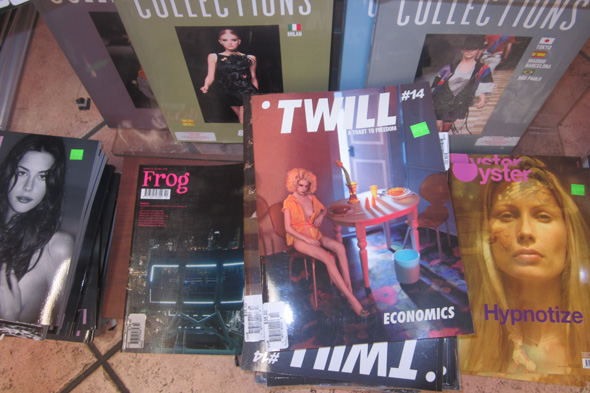
As plummeting revenues plague print media, it seems that fashion magazines are doing better than their peers in terms of maintaining circulation levels. Among the beneficiaries of this trend are Ami and Jay Patel, who in less than 20 years have expanded their single fashion magazine store to two stores and a booming Internet order business.
The couple started a newsstand business that they parlayed into a shop on 39th Street in the early 1990s; then they replaced that shop with a larger one on 40th Street. Two months ago, they added a second location on 37th Street, giving each spouse a store to manage. Together, according to Ami Patel’s estimate, the two stores offer around 5,000 titles. While they don’t keep a record of which ones sell best, both agree that fashion magazines and books make up 70 percent of sales. Of that group, fashion trade magazines constitute 80 percent. (The store also sells general interest magazines and gift shop fare.)
Customers include designer brothers Tommy and Andy Hilfiger, who have both shopped at the 40th Street store since they came across it years ago.
“They have what you can’t get in the grocery store or a magazine stand,” said Andy Hilfiger, whose Andrew Charles line recently debuted. “You can go in and get all your magazines from all over the world in one shot.” Andy Hilfiger says he probably stops by the store at least once a month. “All the designers are familiar with Around the World,” he said.
Though he reads a few magazines on his iPad, the designer says he would estimate that 75 percent of his reading is offline. Like many designers, he uses fashion magazine cutouts as part of inspiration boards—collages that help encapsulate a style or tone.
Vogue, Elle and Lucky magazines top the fashion genre in popularity, according to statistics from the Audit Bureau of Circulations. Vogue dominates with a circulation of 1,248,121. People, Time, Newsweek, Sports Illustrated and TV Guide beat Vogue in total numbers, but the smallest circulation among the fashion magazines, W, is still more than twice as high as the lowest of the news magazines, the Village Voice.
Fashion photographer and filmmaker Javier Barcala, whose work recently appeared in a series of short films promoting a sustainable fashion project, considers print and digital media equally important modes of expression – just different. “I collect magazines, and I look at websites for facts,” Barcala said. “I think that’s the most important difference: I look for facts, dates of an exhibition, a designer, photos of his collection. But when I really want to indulge myself in the fashion editorial, when I really want to read about fashion or an article, I buy the magazine and read it. I can’t satisfy that need online … That’s the experience of reading that the online version doesn’t give.”